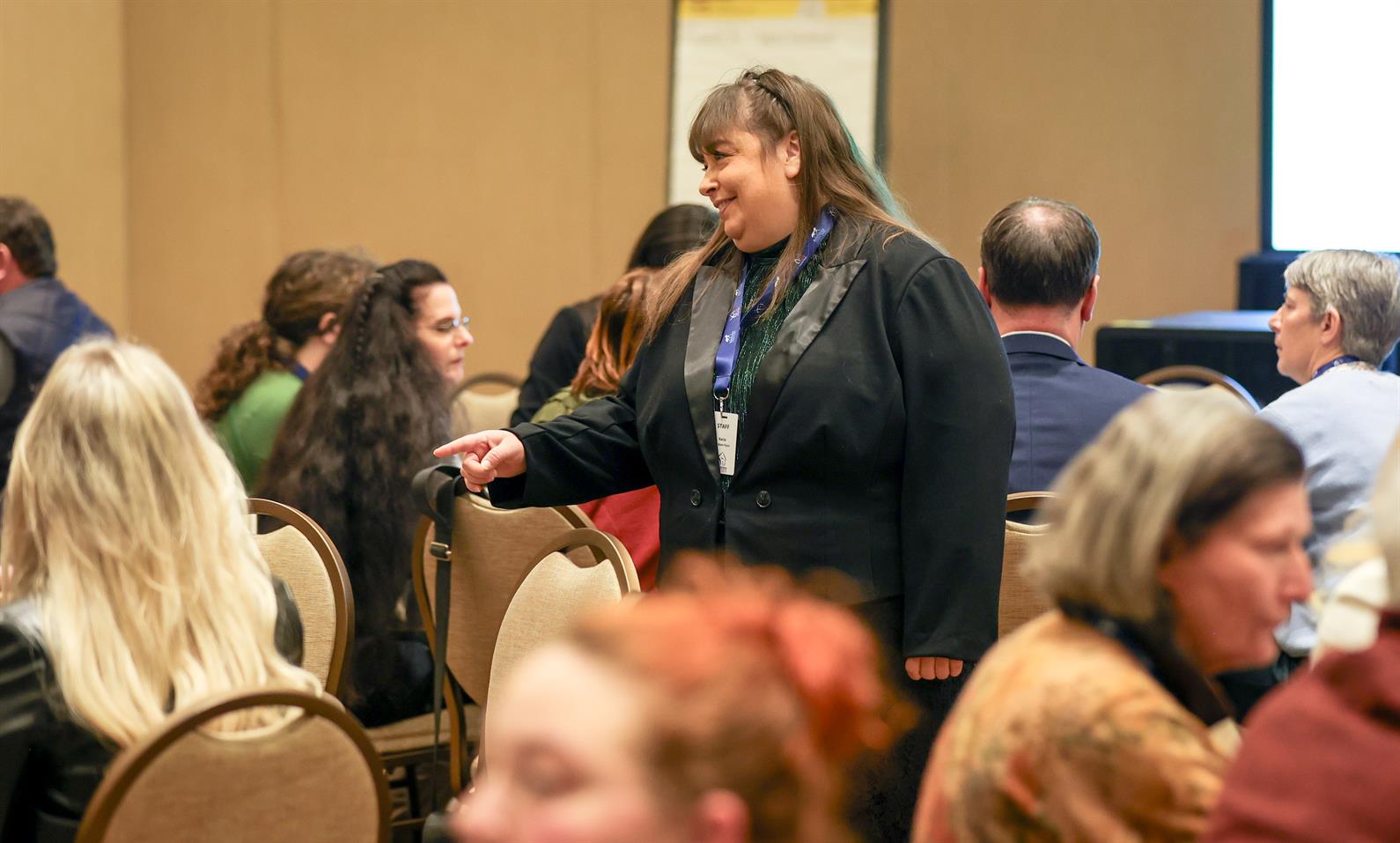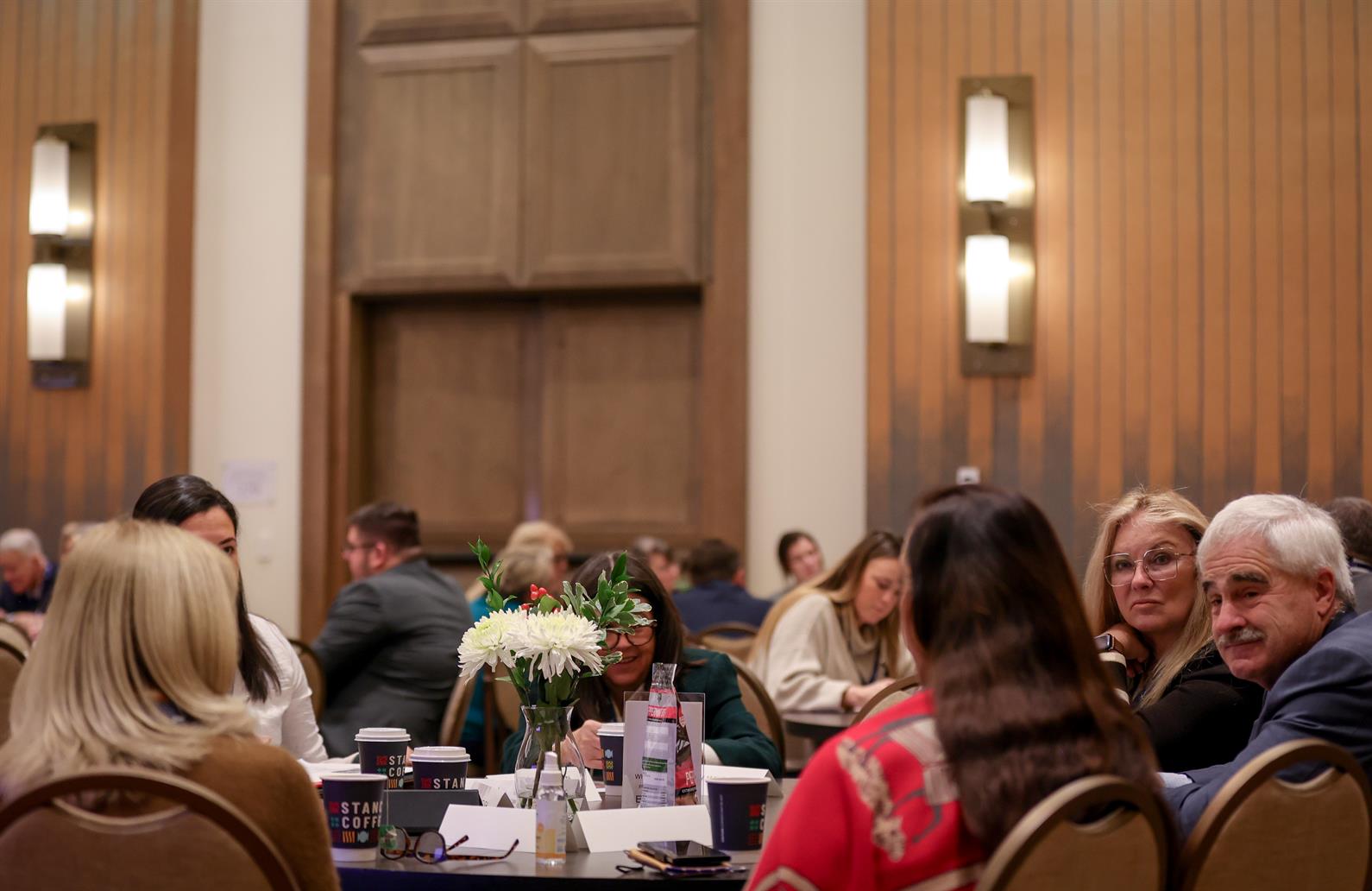Lexington, Ky. - Dr. Katie Flynn, US Equestrian Senior Staff Veterinarian, led a biosecurity workshop to kick off the 2024 US Equestrian Annual Meeting on Jan. 13 in Louisville, Ky. During the workshop, Dr. Flynn shared ways to best prevent and manage an equine infectious disease outbreak. Attendees were also given biosecurity outbreak situations to problem-solve from the viewpoint of either a veterinarian, competition manager, trainer, or event communications representative. Dr. Flynn discussed the key points of the attendees’ responses and concluded the workshop with the point that good biosecurity practices lead to healthy horses and a healthy event environment, which results in a successful event.
Biosecurity Basics
Horse shows are at risk for the introduction and spread of diseases, given the movement of horses, individuals, and equipment into, out of, and through venues. Dr. Flynn noted that everything from a horse trailer full of horses to a feed truck can introduce bacteria, a virus, and/or a fungus.
“Everything that comes in has the potential to bring in something with it,” said Dr. Flynn. “We have to understand what those risks are for introduction. Then, you have to think about, once it is in a facility, how does it get moved around?”
When assessing biosecurity risks for an event, Dr. Flynn explained that there are three components to consider: the competitor (athlete and horse), the pathogen (virus or bacteria), and the environment (event grounds).

(Matt Turer/US Equestrian)
“You can’t just address one,” Dr. Flynn said of the three components. “If there is a disease outbreak, there is no way to completely eliminate all pathogens. We will always have risk. We must work within this triangle to address our disease control as well as our prevention steps.”
She compared a disease outbreak to a perfect storm, beginning with the disease entering a horse show environment, being moved and spread around, and exposing naïve and often times stressed horses to illness.
Dr. Flynn explained that preventing a disease outbreak involves biosecurity.
“[Biosecurity] means to stop the entry of pathogens from entering or spreading on a showground or at a home facility,” said Dr. Flynn. “Doing what we can [for biosecurity] may mean doing something that is inconvenient.”
In 2023, US Equestrian had 2,132 competitions with an average of 189 horses per competition. Fifty-five competitions had more than 1,000 horses, and 57 of the 388 facilities hosted competitions of 10 or more days.
“Incubation time is from the time of exposure to the time that horse shows clinical signs. That could be anywhere from three to seven days for most common pathogens,” said Dr. Flynn. “When you think about that three to seven days, the longer that horse is on the showgrounds, the longer that horse is exposing other horses.”
She continued by noting that longer horse shows can roll into a second incubation period and more transmission of a disease to additional horses on the grounds. In addition, horse shows have a unique set of biosecurity challenges:
- Commingling of horses of unknown health status
- Close proximity of horses in the stabling and competition areas
- Animal and human movement
- Inadequate or non-existent isolation areas
Dr. Flynn said the goal of biosecurity is to prevent the worst-case scenario. She used the example of the 2011 National Cutting Horse Championship event in Ogden, Utah, where 708 entries from 21 states and Canadian provinces resulted in 90 confirmed cases equine herpesvirus 1 (EHV-1) in 10 states, which lead to secondary and tertiary cases at home barns.
EHV-1 Scenario Outbreak and Discussion
Dr. Flynn presented to the group a hypothetical EHV-1 scenario involving a horse show with 200 horses in 10 barns and four weeks of competition. A sick horse was unable to rise in barn four on Friday of week two of the horse show. Attendees were given questions to answer focused on response measures and prevention by assuming the roles and providing the perspective of a veterinarian, competition manager, trainer, or event communications representative.
Before the group table discussions, Dr. Flynn provided the basics about EHV-1 and testing for the disease. She explained that EHV-1 is a respiratory virus that can be spread by air over 30 feet and that fomites (anything that is contaminated by nasal secretions and touches a horse), ranging from hands of grooms and owners to stall cleaning equipment and nose rags, help spread the disease. Horses can be symptomatic or asymptomatic. Dr. Flynn said that PCR testing of nasal swabs and blood takes two days at the lab to receive results, and horses that test negative initially may test positive later on.
Veterinarian’s Perspective
From the veterinarian perspective, attendees focused on isolation, testing, and notification for their response measures. Dr. Flynn pointed out that competition managers and veterinarians need to work together, the horse should be isolated as quickly as possible, veterinarians need to have supplies to test horses and know where to send tests, and they should notify her as the US Equestrian Senior Staff Veterinarian and the state veterinarian while waiting on the test results.
In terms of veterinarian prevention measures, attendees stressed the importance of pre-event planning. Dr. Flynn noted that veterinarians should be communicating with competition management prior to the event, know state rules and diagnostic testing laboratory details, and become familiar with diseases in the area by referring to the Equine Disease Communication Center. She added that veterinarians should be able to communicate effectively to manage the panic of competitors.

(Matt Turer/US Equestrian)
Competition Management’s Perspective
As a competition manager in the scenario, attendees mentioned notification of necessary parties like state veterinarians and competitors, isolation of sick horses, and testing as some of their top biosecurity response measures. Dr. Flynn suggested requiring horses’ temperatures to be taken twice daily and subsequent reporting of any fevers. She added that competition managers need to be strategic with testing and be prepared to isolate if tests come back positive.
Attendees focused on pre-event planning with cleaning and sanitizing the facility and having a written biosecurity and isolation plan for competition manager prevention measures. Dr. Flynn noted that ensuring healthy horses are coming onsite with health certificate requirements is a good course of action, but competition managers need to be prepared to verify and validate policies for health.
Trainer’s Perspective
From the trainer's perspective, attendees focused on isolation, limiting exposure, and disinfecting equipment for their biosecurity response measures. Dr. Flynn pointed out that determining who has come in contact with the horses is key to identifying exposure as braiders, grooms, riders, farriers and allied health professionals typically interact with several horses across the grounds in a typical day.
Attendees shared trainer prevention ideas for before, during, and after the event, such as individual equipment that is sanitized regularly, as well as taking temperatures and reducing horse-to-horse contact during the event. Dr. Flynn recommended having a person responsible for protocols, starting those protocols at home, and continuing them throughout the show.
Event Communication Team’s Perspective
Attendees assigned the event communications representative perspective noted the importance of forming an effective communication plan with the competition management team. Dr. Flynn emphasized the importance of securing the facility to contain an outbreak, communicating as soon as possible once you have solid information, and calming people down with communication such as trainer and/or all-participant meetings. Attendees also suggested educating event stakeholders on biosecurity tips, communicating any policies, and providing important contact information. Dr. Flynn suggested reminding people that a fever is 101.5 degrees Fahrenheit, and temperatures should be taken before any medication is given. She also noted that people can limit horse-to-horse contact with cleaned and sanitized solid wall stalls, but there needs to be proper ventilation.
Dr. Flynn reminded attendees that biosecurity is a “joint effort” between competitors and competition managers to keep horses and horse show environments healthy and safe.
“Competitors need to practice the biosecurity tips specifically those we talked about such as limiting horse-to-horse contact, limiting people’s contact with those horses, making sure you have some hand sanitizer or disinfection available, and avoiding the sharing of equipment,” said Dr. Flynn.
She added that competition grounds need to clean and disinfect stalls and common areas, allow only healthy horses to enter the grounds, require health monitoring, and be prepared to isolate sick horses.
“It is not a matter of if an infectious disease outbreak is going to happen, but when it is going to happen,” said Dr. Flynn. “That’s why I am having this conversation, so that we can get the message out that healthy horses and healthy competitions rely on everyone doing their part at home, at the show, and when they go home.”


